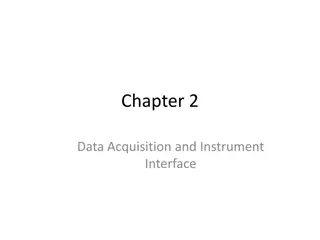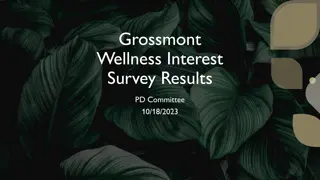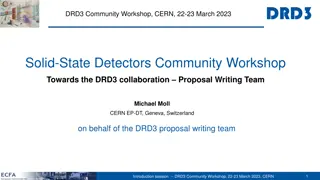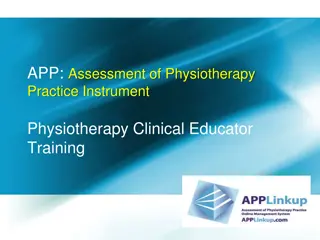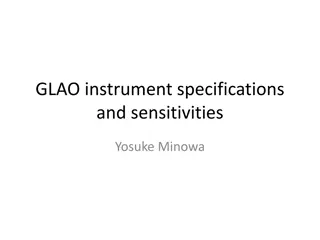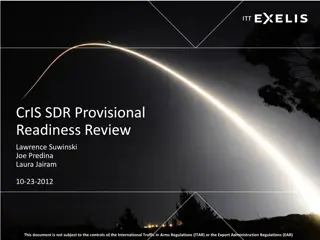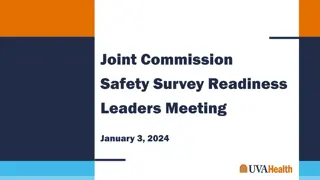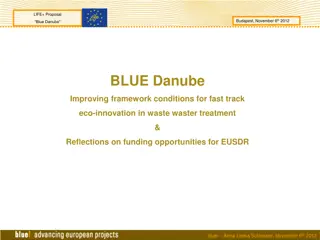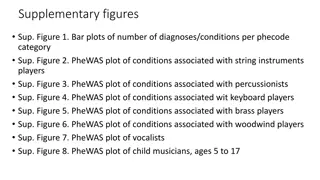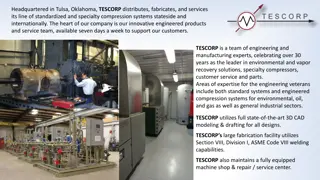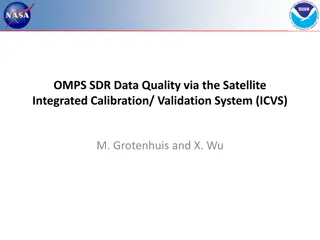Proposal for Improving Workplace Skills Survey Instrument
This document outlines the proposal for enhancing the data collection instrument and survey process for workplace skills development within the current SETA Grant Regulations. It addresses challenges in data quality, relevance, and accessibility, aiming to streamline the process and enhance skills planning effectiveness. The focus is on replacing the existing WSP/ATR template with a more simplified Workplace Skills Survey (WSS) while ensuring coordinated data integration from employers.
Download Presentation

Please find below an Image/Link to download the presentation.
The content on the website is provided AS IS for your information and personal use only. It may not be sold, licensed, or shared on other websites without obtaining consent from the author.If you encounter any issues during the download, it is possible that the publisher has removed the file from their server.
You are allowed to download the files provided on this website for personal or commercial use, subject to the condition that they are used lawfully. All files are the property of their respective owners.
The content on the website is provided AS IS for your information and personal use only. It may not be sold, licensed, or shared on other websites without obtaining consent from the author.
E N D
Presentation Transcript
Discussion Document: Annexure 2 Discussion Document: Annexure 2 Review Review training, educating & developing the skills workforce 1
Presentation Outline 1. Background 2. Purpose of Discussion Document 3. Review the WSP/ATR: Importance 4. Mandate of this Discussion Document 5. Purpose of the workplace skills survey and who will use it? 6. Key research questions for the survey 7. Changes are proposed on the current WSP/ATR template 8. Salient features of the proposed workplace skills survey 9. Structure of the workplace skills survey 10. Roles and Responsibilities 11. Relationship to the National Skills Development Plan 12. Consultations and Implementation Plan 13. Transitional Measures 14. Conclusion training, educating & developing the skills workforce 2
Background Background Government introduced the Skills Development Act 97 of 1998 (RSA, 1998), and the Skills Development Levies Act 9 of 1999 (RSA, 1999), to promote, encourage, incentivise and regulate skills development in the country. Legislation also included a skills levy grant rebate scheme, which comprised Mandatory and Discretionary Grant to incentivise employers to upgrade the skills of the labour force. Mandatory Grant is a skills levy rebate paid by SETAs to employers, upon submission of a workplace skills plan and annual training report by employers. However, despite improvements to the template used to collect data from employers since 2012, the representiveness and quality of employer data continue to remain a challenge. training, educating & developing the skills workforce 3
Purpose of Discussion Document Purpose of Discussion Document Discussion Document proposes a shorter and more simplified data collection instrument and an improved employer survey process, within the framework of the current SETA Grant Regulations. Importantly, the Discussion Document does not? make any proposals with respect to the proportional allocation of the Mandatory Grant to employers. Purpose of this Discussion Document is two-fold, namely: Propose replacing Workplace Skills Plan (WSP) /Annual Training Report (ATR) template, which is currently Annexure 2 of the SETA Grant Regulations, with a modified instrument referred to as the Workplace Skills Survey (WSS), and Propose processes for the coordination and integration of data that is currently collected by SETAs from employers through the WSP/ATR. training, educating & developing the skills workforce 4
Review the WSP/ATR: Importance Review the WSP/ATR: Importance Express concern about quality of data employers provide to SETAs in terms of the Mandatory Grant, as well as limited diagnostic analysis undertaken of such data for skills planning. The following are some of the reasons for the review: Length of Instrument: Although there have been improvements to the WSP/ATR templates since 2013, the templates remain lengthy and unfriendly. Davis Tax Committee Report on SMEs expresses concern on inability of SMEs to access the SETA Mandatory Grant, owing to excessive information requirements Lack of relevance: Much of the data requested from employers in lieu of the Mandatory Grant is not useful for skills planning given that WSPs and ATRs are not monitored for implementation by most SETAs. Low rate of WSP/ATR submissions: Although there has been an improvement in submission of WSP/ATRs since 2013, the rate of WSP/ATR submissions remains low. Different tools for public and private employers: Annexure 2 comprises different templates for public and private employers. This is unnecessary because private and public employers operate in the same labour market training, educating & developing the skills workforce 5
Purpose of the workplace skills survey and Purpose of the workplace skills survey and who will use it? who will use it? Purpose of the WSS is to contribute to labour market intelligence, which is essential for skills planning. More specifically, the WSS intends to obtain data from employers, and report thereon, in lieu of the Mandatory Grant. Findings from the WSS will be used by the following role-players: SETAs: facilitate Mandatory Grant disbursements SETAs: identify skills needs and priorities SETAs: inform Discretionary Grant disbursement processes Department of Higher Education and Training: inform enrolment planning, career information and resource allocations Post-school education and training institutions: prioritise programmes that are responsive to economic and social development needs of our country Employer, workers and civil society bodies: align training to economic and societal needs. training, educating & developing the skills workforce 6
Purpose of the workplace skills Purpose of the workplace skills survey and who will use it?... survey and who will use it?... National, provincial and local public organisations: inform decision- making on training needs. Employers: provide information for the skills component of Broad-Based Black Economic Empowerment (BBBEE) information requirements training, educating & developing the skills workforce 7
Changes are proposed on the current Changes are proposed on the current WSP/ATR template WSP/ATR template The following key changes are proposed: WSP and ATR should be replaced by a modified instrument, called the Workplace Skills Survey (WSS), which is more relevant for skills planning. WSS requires employers to provide individual employee data to their designated SETA, instead of aggregated employee data as required by the current WSP/ATR template. By migrating to a system of collecting and providing individual employee data, the accuracy, reliability and consistency of data received from employers is strengthened. SETAs will continue to collect data from employers in their sector, however, DHET will provide common specifications to SETAs. SETAs will export data in a pre-determined file format and submit the data to the DHET s Skills Education and Training Management Information System (SETMIS). training, educating & developing the skills workforce 8
Salient features of the Workplace Salient features of the Workplace Skills Survey Skills Survey The table below describes the salient features of the WSS: Objective Outcome To collect data from employers for skills planning Contribute to the goal of establishing a credible, institutional mechanism for skills planning , Goal 1 of the National Skills Development Strategy (NSDS III). All employers who are registered to pay company tax are expected to complete this survey. This includes levy-paying and non-levy paying employers registered to pay tax (including the public sector). Employers who are not registered to pay company tax, are excluded from completing this survey. WSS will be accessible on a web-based platform. It will allow for validation rules to be coded into specifications, which will identify obvious input errors and thus increase the reliability of the data. However, employers will have the option of submitting their data in EXCEL should a web- based platform not be appropriate for their context. Wherever applicable, drop down boxes and search functions will be used. Data fields will be pre-populated where possible to facilitate completion. Target Groups Exclusions Platform User- Friendly training, educating & developing the skills workforce
Table below describes the salient features of the WSS Definitions Focus Areas Definitions will pop up for key terms such as hard-to-fill vacancies and skills gaps WSSwill collect information on the following: Employer profile Employee Profile (unidentifiable, unit level records) Hard to fill vacancies Skills gaps WSS will be conducted annually. Employers are expected to provide data to their relevant SETAs by 30 April each year (as per current practice). Frequency Submission date Period of reporting For certain kinds of data (eg. HTFV, skills gaps and training undertaken by employees), employers are expected to provide data that is applicable for the previous financial year of the organisation Date of applicability For certain kinds of data, such as number of employees and employee profile, employers are expected to provide data that is applicable as at the last day of the financial year of the employer, in the applicable year training, educating & developing the skills workforce 10
Structure of Workplace Skills Survey Structure of Workplace Skills Survey WSS comprises the following five sections: SECTION A: Administrative Details - Standard information about employer. It is similar to Annexure 2 of SETA Grant Regulations. SECTION B:Employee Profile - This section requires the following data about EACH employee: (i) Biographical data, such as age, race, gender, highest level of education attainment, citizenship and disability. (ii) Occupation-related data, such as job title, OFO title (at digit-level 6), employment status, province, municipality, salary band. (iii) Training data, namely, information on whether an employee participated in any training in the previous year. SECTION C: Hard-To-Fill Vacancies(HTFVs) - data on the number of HTFVs by OFO 6-digit title and reasons for HTFVs. SECTION D: Skills Gaps - Data on top THREE most common skills gaps (top-up skills) identified by employers, by major occupation levels. SECTION E:Expenditure on Training- General information about expenditure on training SECTION F: Declaration - Employer and employee representatives in the organisation to declare that the data provided is correct. training, educating & developing the skills workforce
THANK YOU training, educating & developing the skills workforce 12
mmaphakela@wrseta.org.za training, educating & developing the skills workforce 13



